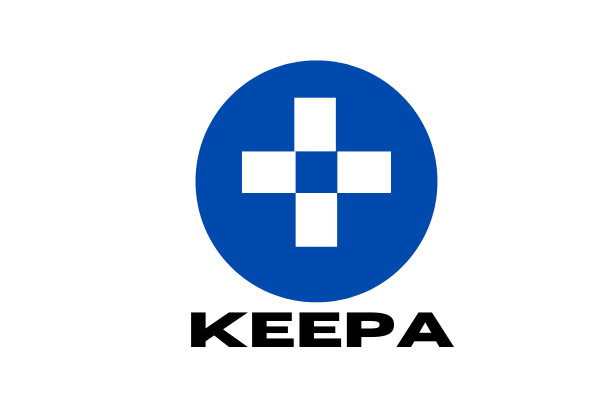Imagine your website as a bustling store in a crowded marketplace. On-page optimization factors are like the vibrant window displays, catchy slogans, and well-organized shelves that lure customers in and make them stay. In the online world, these factors tell search engines like Google what your page is about and why it deserves a prime spot in search results.
So, what exactly are on-page optimization factors?
They’re the elements you control directly on your web pages, from content to code, that influence how search engines understand and rank your website. Think of it as sending clear signals to a search engine robot, guiding it through your page and highlighting its relevance to certain keywords and searches.
Here are some key players in the on-page optimization team:
- Content: King of the castle! High-quality, informative, and relevant content that naturally incorporates target keywords keeps users engaged and tells search engines what your page is all about.
- Title tags and meta descriptions: These are like mini billboards for your page, appearing in search results. Craft compelling titles and descriptions that accurately reflect your content and entice users to click.
- Headings and subheadings: Think of them as road signs, structuring your content and making it easy for users and search engines to navigate.
- Images and multimedia: Break up text with engaging visuals, but don’t forget to optimize them with descriptive alt text for accessibility and search engine understanding.
- Internal links: Connect your pages by linking relevant content, helping users explore your website and sending valuable signals to search engines about your site structure and content focus.
- Technical factors: Page speed, mobile-friendliness, and website structure all play a role in the user experience and how search engines crawl and index your pages.
But remember, on-page optimization isn’t just about ticking boxes:
- Focus on user experience: Prioritize creating valuable content that users enjoy and find helpful. Search engines love happy users!
- Don’t keyword stuff: Naturally sprinkle relevant keywords throughout your content, but avoid unnatural keyword stuffing that hurts readability.
- Stay updated: Google’s algorithms evolve, so stay informed about the latest best practices and adapt your optimization strategies accordingly.
Table of Contents
Keyword Research Factors
Keyword research factors are the key aspects you consider when choosing the right keywords to target for your website or content. Picking the best terms is like finding the perfect fishing spot – you want high “fish” (traffic) but manageable competition. Here are some crucial factors to think about:
Relevance: Choose keywords closely related to your content and target audience. Traffic from irrelevant searches won’t convert!
Search volume: Aim for keywords with enough people searching for them, but avoid terms with overwhelming competition. A sweet spot is key.
Competition: Assess the difficulty of ranking for certain keywords. New websites might struggle with ultra-competitive terms.
Intent: Understand the searcher’s purpose behind the keyword. Are they researching, comparing, or ready to buy? Align your content with their intent.
Long-tail keywords: Consider longer, more specific phrases. They may have lower volume, but users with these queries are often closer to conversion.
Local keywords: If your business has a local focus, target keywords with location modifiers to attract nearby customers.
Mobile and voice search: Optimize for how people search on mobile and with voice assistants. Shorter, natural-language keywords can be helpful here.
Trends and seasonality: Stay ahead of the curve by researching industry trends and seasonal changes in search behavior.
Cost per click (PPC): If you’re using paid advertising, consider the keyword’s PPC to understand its potential cost and profitability.
Remember: Keyword research is an ongoing process. Keep refining your list based on your performance and evolving trends to attract the right traffic and achieve your SEO goals.
Site Map Creation Factors
Imagine a sitemap as a blueprint for your website, guiding both visitors and search engines through its structure.
Key factors to consider when creating an effective sitemap:
1. Website Size and Complexity:
- Smaller websites: May need only one sitemap.
- Larger or more complex websites: Benefit from multiple sitemaps, categorized by content type or section.

2. Content Types:
- Include all important pages: articles, products, images, videos, etc.
- Consider creating separate sitemaps for different content types, especially for large websites.
3. Update Frequency:
- Regularly updated websites: Need more frequent sitemap updates.
- Use tools or plugins: To automate sitemap generation and submission to search engines.
4. Target Audience:
- Structure your sitemap: To match how users expect to find information.
- Think about user experience: And make navigation intuitive.
5. Search Engine Guidelines:
- Adhere to guidelines: From Google, Bing, and other search engines to ensure proper indexing.
- Check for updates: As guidelines may evolve.
Additional Tips:
- Use clear and concise language: In your sitemap file.
- Validate: Before submitting to search engines.
- Monitor: Sitemap indexing status using search engine webmaster tools.
- Consider visual sitemaps: For user-friendly navigation on your website.
Image example of a visual sitemap

visual sitemap, showing a graphical representation of a website’s structure
By carefully considering these factors, you can create a comprehensive and well-organized sitemap that helps search engines understand your website, discover new content, and improve its visibility in search results.
Image/ Video Optimization Factors
1. Website Type and Purpose:
- Informational sites: Focus on clear navigation and hierarchy of content.
- Ecommerce sites: Prioritize product pages and categories for discoverability.
- Blogs or news sites: Ensure timely indexing of new content with frequent updates.
2. Target Audience:
- Understand their needs and expectations to create a user-friendly structure.
- Consider their search behavior and preferred terminology for navigation.
3. Website Size and Complexity:
- Smaller sites: Manual sitemap creation might be feasible.
- Larger or complex sites: Automatic sitemap generators are often necessary.
4. Content Types:
- Include all relevant pages (HTML, images, videos, etc.) to ensure comprehensive indexing.
- Use specific sitemap formats for different content types (e.g., XML sitemaps, video sitemaps).
5. Website Structure and Navigation:
- Reflect the hierarchy and relationships between pages accurately.
- Create a logical structure that’s easy for both users and search engines to navigate.
6. Search Engine Optimization (SEO) Considerations:
- Optimize page titles and descriptions within the sitemap to improve understanding for search engines.
- Use sitemaps to prioritize important pages and suggest crawl frequency.
7. Technical Considerations:
- Sitemap format: Choose XML, text, RSS, or Atom based on compatibility and goals.
- File size limits: Split large sitemaps into multiple files (50,000 URLs or 50MB per file).
- Update frequency: Reflect changes to the website regularly, especially for dynamic content.
8. User Experience (UX):
- Design a visual sitemap for users to easily navigate and understand the website’s structure.
- Consider user behavior and create a sitemap that aligns with their expectations.
9. Maintenance:
- Regularly review and update sitemaps to ensure accuracy and reflect changes to the website.
- Monitor for errors or broken links to maintain search engine visibility.
Web Structure Factors
1. Information Architecture (IA):
- Blueprint for organization: Establishes a clear hierarchy and relationships between content areas.
- Logical structure: Ensures content is discoverable and easy to navigate.
- User-centered approach: Prioritizes user needs and expectations.
2. Navigation:
- Signposts for users: Guides them through the website and helps them find information.
- Menus, breadcrumbs, footer links: Common navigation elements.
- Clear labels and intuitive structure: Essential for usability.
3. URL Structure:
- Addresses of web pages: Impacts user experience, SEO, and shareability.
- Logical and consistent: Descriptive URLs reflect content and hierarchy.
- User-friendly format: Avoids excessive parameters and dynamic elements.
4. Internal Linking:
- Connections between pages: Create a network of content and guide users through the website.
- Strategic linking: Highlight important pages, improve discoverability, and distribute link authority.
- Relevant anchor text: Contextual cues for users and search engines.
5. Hierarchy:
- Visual and structural organization: Establishes the importance of pages and content sections.
- Clear headings: Define sections and guide users through content.
- Visual cues (e.g., font size, color): Reinforce hierarchy.
6. Content Grouping:
- Categorization of related content: Improves findability and understanding.
- Logical groupings: Based on topics, themes, or user needs.
- Clear labels and visual separation: Enhance navigation and comprehension.
7. Metadata:
- Information about web pages: Not directly visible to users, but crucial for search engines and accessibility.
- Page titles, descriptions, meta tags: Provide context and relevance.
- Accurate and descriptive: Help search engines understand content and relevance.
8. Mobile-Friendliness:
- Adaptability to different screen sizes: Essential for modern web experiences.
- Responsive design: Ensures optimal viewing and usability across devices.
9. Accessibility:
- Inclusiveness for all users: Considers visual, auditory, motor, and cognitive impairments.
- Web Content Accessibility Guidelines (WCAG): Standards for accessible web design.
10. Technical Factors:
- Server response time: Speed affects user experience and SEO.
- Sitemaps: Guide search engines to discover and index pages efficiently.
- Error handling: Prevents broken links and 404 errors.
- SEO optimization: Technical aspects like structured data and image optimization.
Meta / Title Tag Factors
Factors for SEO:
- Keyword Targeting: Including relevant keywords in your title helps search engines understand your page’s content and potentially rank it higher for related searches.
- Length: Keep it between 51-60 characters to avoid truncation in search results.
- Uniqueness: Each page should have a unique title tag that accurately reflects its content.
- Clarity and Readability: Write catchy and informative titles that users are likely to click on.
Factors for User Experience:
- Accuracy: Clearly summarize the page’s content to avoid misleading users.
- Appeal: Craft compelling titles that entice users to click and learn more.
- Branding: Incorporate your brand name where relevant to build recognition.
Optimizing your title tags for both SEO and user experience improves your website’s visibility and click-through rates, ultimately driving more traffic and engagement.
Remember, while title tags may not directly influence ranking, they offer valuable clues to search engines and users, making them crucial for a successful SEO strategy.
W3C Validation Factors
1. Code Compliance:
- HTML/XHTML Structure: Validators check for proper structure, including opening and closing tags, nesting, and attribute usage.
- Syntax Errors: They identify typos, missing elements, or incorrect code sequences that could cause rendering issues.
- Doctype Declaration: They ensure the correct doctype is specified, signaling the browser to interpret the code accurately.
2. Accessibility:
- Alternative Text: Validators check for alt text on images, providing descriptions for screen readers and those with visual impairments.
- Semantic Structure: They ensure headings, lists, and other elements are used properly to convey content hierarchy and relationships.
- Keyboard Navigation: They assess whether website elements can be accessed and interacted with using only a keyboard.
3. Compatibility:
- Cross-Browser Rendering: Validators help ensure consistent display across different browsers and devices.
- W3C Standards: They promote adherence to established web standards, fostering interoperability and future compatibility.
4. Performance:
- Code Efficiency: Valid code can often be smaller and more streamlined, potentially improving page load times.
- Search Engine Optimization: While not a direct ranking factor, validation can contribute to a well-structured and accessible website, which search engines may favor.
5. Maintainability:
- Error Correction: Validators help identify and fix code issues early, reducing maintenance costs and preventing potential problems.
- Code Clarity: Valid code is often easier to read, understand, and update, simplifying future development and updates.
In summary, W3C validation factors focus on ensuring code quality, accessibility, compatibility, performance, and maintainability for a better web experience.




